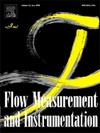Balanced deep learning-based bubble segmentation: Model comparison, optimization, and application in microbubble detection
IF 2.3
3区 工程技术
Q2 ENGINEERING, MECHANICAL
引用次数: 0
Abstract
The accurate segmentation and analysis of bubbles are crucial for understanding bubble generation mechanisms and improving industrial microbubble detection. This study aims to evaluate and optimize deep learning-based bubble segmentation models. Firstly, a systematic model evaluation matrix is proposed, including the general model performance, defocused bubble size prediction accuracy, and overlapping bubble segmentation. Secondly, four models, including SplineDist, StarDist, YOLOv8-seg, and Mask R-CNN, are compared. The SplineDist-M16 model demonstrates superior image processing speed (7.84 FPS) and high accuracy in bubble size prediction with minimal misdetection (6.1 %). Compared to other models, SplineDist-M16 excels in edge fitting and overlapping bubble identification. The optimized model provides rapid, accurate measurement of bubble quantity, size, and shape, offering insights into bubble formation and guiding microbubble generator design. This study paves the way for real-time microbubble detection in industrial applications and suggests further model improvements through simulated data training and enhanced overlapping bubble segmentation. Furthermore, the SplineDist-M16 model was utilized to analyse the impact of flow rate and backpressure on microbubble characteristics generated by a Venturi-tube microbubble generator. The results show that increased flow rate reduces bubble size and increases bubble circularity, while backpressure has minimal impact on bubble size distribution and shape.
基于平衡深度学习的气泡分割:微气泡检测中的模型比较、优化和应用
准确的气泡分割和分析对于理解气泡的产生机理和提高工业微气泡检测水平至关重要。本研究旨在评估和优化基于深度学习的气泡分割模型。首先,提出了一个系统的模型评价矩阵,包括模型一般性能、散焦气泡大小预测精度和重叠气泡分割;其次,比较SplineDist、StarDist、YOLOv8-seg、Mask R-CNN四种模型。SplineDist-M16模型显示出卓越的图像处理速度(7.84 FPS)和气泡大小预测的高精度,误检率最低(6.1%)。与其他模型相比,SplineDist-M16在边缘拟合和重叠气泡识别方面表现出色。优化后的模型提供了快速、准确的气泡数量、大小和形状测量,为气泡形成和指导微气泡发生器设计提供了见解。该研究为工业应用中的实时微气泡检测铺平了道路,并建议通过模拟数据训练和增强重叠气泡分割进一步改进模型。此外,利用SplineDist-M16模型分析了流量和背压对文丘里管微泡发生器微泡特性的影响。结果表明:增大流量可减小气泡尺寸,增大气泡圆度,而反压对气泡尺寸分布和形状的影响最小;
本文章由计算机程序翻译,如有差异,请以英文原文为准。
求助全文
约1分钟内获得全文
求助全文
来源期刊

Flow Measurement and Instrumentation
工程技术-工程:机械
CiteScore
4.30
自引率
13.60%
发文量
123
审稿时长
6 months
期刊介绍:
Flow Measurement and Instrumentation is dedicated to disseminating the latest research results on all aspects of flow measurement, in both closed conduits and open channels. The design of flow measurement systems involves a wide variety of multidisciplinary activities including modelling the flow sensor, the fluid flow and the sensor/fluid interactions through the use of computation techniques; the development of advanced transducer systems and their associated signal processing and the laboratory and field assessment of the overall system under ideal and disturbed conditions.
FMI is the essential forum for critical information exchange, and contributions are particularly encouraged in the following areas of interest:
Modelling: the application of mathematical and computational modelling to the interaction of fluid dynamics with flowmeters, including flowmeter behaviour, improved flowmeter design and installation problems. Application of CAD/CAE techniques to flowmeter modelling are eligible.
Design and development: the detailed design of the flowmeter head and/or signal processing aspects of novel flowmeters. Emphasis is given to papers identifying new sensor configurations, multisensor flow measurement systems, non-intrusive flow metering techniques and the application of microelectronic techniques in smart or intelligent systems.
Calibration techniques: including descriptions of new or existing calibration facilities and techniques, calibration data from different flowmeter types, and calibration intercomparison data from different laboratories.
Installation effect data: dealing with the effects of non-ideal flow conditions on flowmeters. Papers combining a theoretical understanding of flowmeter behaviour with experimental work are particularly welcome.
 求助内容:
求助内容: 应助结果提醒方式:
应助结果提醒方式:


